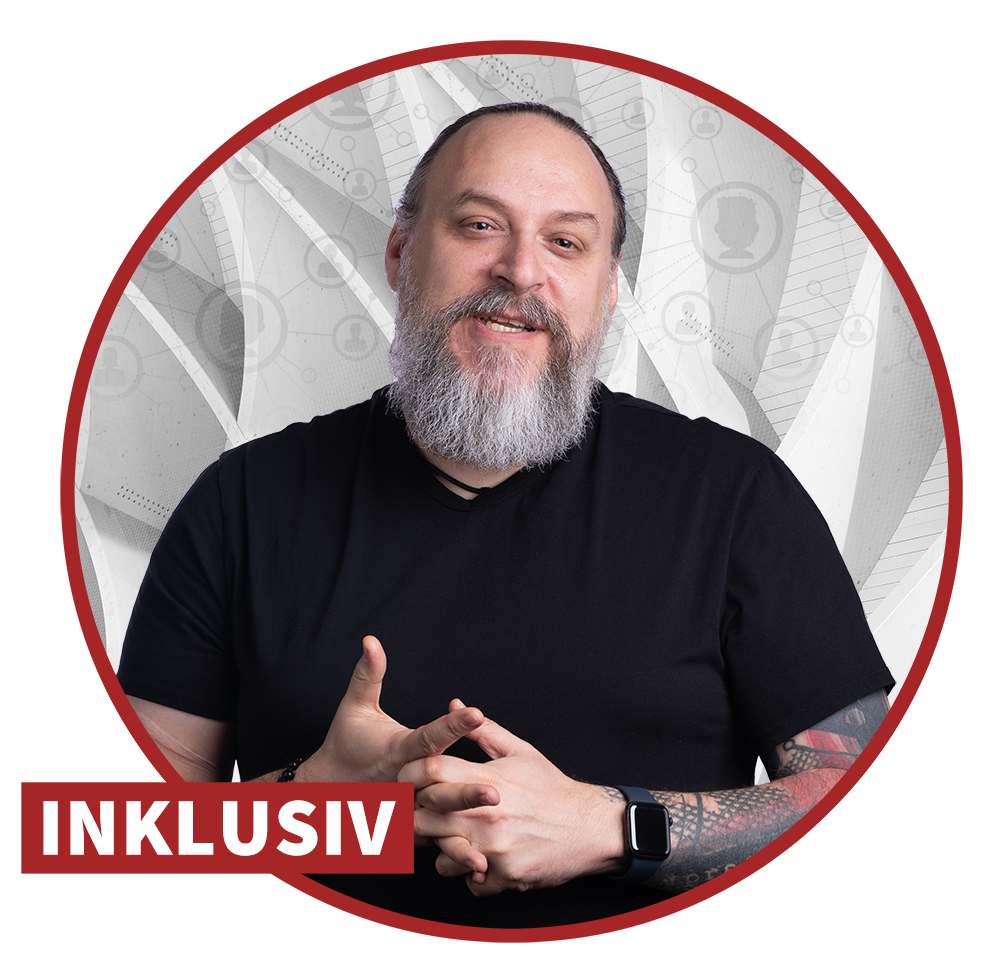Discovering the 5 INs of inclusive speaking
In our previous post, I introduced the idea that the path to becoming an inclusive speaker had to go through five very distinct phases, or stages, which I’ve identified as the 5INs of inclusive speaking.
After all these years of tinkering with that idea, I’ve grown very confident in believing that every speaking professional not only sits somewhere on a spectrum ranging from clueless to cognizant when it comes to inclusion but also fits mostly within one of the five categories at any moment in their development or career.
I’ve labeled these stages, the instinctive, inspired, informed, involved, and inclusive phases, based on how aware speaking professionals are about inclusion when it comes to audience members who have disabilities, are older or are somehow marginalized by our use of technology.
This determination is rooted in two main driving forces: the speakers’ perceived level of connectedness with their audience, and their perceived level of consciousness about their audience member’s different sets of needs, biases, and expectations. Combined, these two forces make up a profile for each and every speaker that ever walked up on a stage, whether it is an in-person or virtual one.
Graphic showing the 5 quadrants of the inclusive speaking model with INSTINCTIVE going across the entire graph at the bottom, INSPIRED sitting on the lower left quadrant, INVOLVED in the upper left quadrant, INVESTED in the lower right quadrant, and INCLUSIVE, in the upper right quadrant. The X-axis reads “level of connectedness” and the Y-axis reads “level of consciousness”.
Up until this point with these posts, we’ve been focused on understanding the nature of the problems caused by a lack of inclusion, as well as some of the things we as speaking professionals, can do about it. The time has now come for you to determine where you fit in. Through this follow-up post, I’d like to present these five stages to you, so you can start analyzing where you might fit.
Some of you may already have a good idea of where you are, or maybe even of where you’d want to be. Are you ready to learn a bit more about yourself and where you currently live on that spectrum?
Exploring all 5 stages of the inclusive speaking model
Stage 1 – The INstinctive speaking phase

While instinctive speakers can sometimes be experienced professionals, their own unconscious biases and personal preferences constantly get in the way of their ability to deliver a truly inclusive experience to their audience. Their inability to consider diversity in their audience composition, paired with a one-size-fits-all approach to delivering content, results in a tendency to view their audience as nothing more than an extension of what they believe to be appealing, engaging, and interesting. Their limited approach to diversity often leads to experiences that may work great for some people who look and think like them, but otherwise, fall flat for those who think, feel or experience life differently than they do.
Stage 2 – The INspired speaking phase

Inspired speakers have had enough exposure to the impacts of disabilities and aging-related challenges on audience members to recognize that there might be more to diversity than commonly agreed-upon concepts such as learning styles, gender fluidity and skin tones, but don’t yet have enough clarity to know what they can do about it. While they successfully appeal to different learning styles with a variety of techniques, their definition of diversity is still clouded by their own lived experiences and unconscious biases. Their delivery approach still doesn’t fully account for the needs of those who are potentially left out, and as a result, part of their audience remains unable to fully engage in the experiences they create.
Stage 3 – The INvolved speaking phase

Involved speakers are very good at appealing to different learning styles, but are also growing painfully aware that diversity needs to go far beyond the needs and expectations of visual, auditory, and kinesthetic learners. They recognize disabilities and age-related challenges as use cases that must be addressed to successfully engage all of their audience members but don’t necessarily yet fully grasp how such use cases must belong in the Diversity, Equity, and Inclusion (DE&I) space for their message to truly reach its full potential. While they are not yet clear on what needs to be done to truly include everyone, they actively seek answers and don’t shy away from putting basic techniques into practice.
Stage 4 – The INvested speaking phase

Invested speakers understand that audiences are made up of a variety of individuals with different perspectives, needs and expectations that don’t necessarily fit the mold of the typical audience member. They know that a one-size-fits-all approach to delivering content inevitably leads to individuals being left out, and constantly striving to improve themselves, the experience they design and the materials they create. They purposefully leverage inclusive communication techniques to mitigate the risks of exclusion and strive to constantly learn as much as they can about disabilities, ageing, and other, more commonly agreed upon considerations from the Diversity, Equity and Inclusion (DE&I) space.
Stage 5 – The INclusive speaking phase

Inclusive speakers have mastered the ability to craft speaking experiences that are truly inclusive of everyone, regardless of the disabilities that they may have or the challenges that they may face. They have developed an in-depth understanding of the risks and perils associated with excluding audience members based on disabilities, ageing, and other such considerations typically found in the Diversity, Equity, and Inclusion (DE&I) space. They have made it their life’s mission to always be learning new ways to improve the experience they design and the materials they create so that every audience member can be empowered to truly connect with the message that they share, their brand and their ideas.
Where do you find yourself fitting in this model? Are you at the beginning of this journey, still looking out for ways to get out of your own way, so more audience members can benefit from your great ideas, or are you further down this path, already applying some techniques, tips, and tricks to be more inclusive of different audience members’ whose needs and experiences are very different from your own?
So there you have it. Five different stages, incrementally building on top of one another, basically pave the way towards a truly inclusive approach to communicating inclusively with all of our audience.
As we keep exploring this field together, we will begin to analyze different approaches and techniques we can consider to keep improving as individuals so that our businesses benefit and we find ourselves less and less confronted with the sad perspective of leaving people behind, and leaving money on the table.
Stick around, because we’re only getting started.

About Denis Boudreau
Denis Boudreau is a consultant, trainer, coach, and speaker specializing in inclusive leadership and inclusive communication. He works with leaders and executives who are no longer willing to overlook disability inclusion and want to transform their leadership approach from “inclusive-ish” to truly inclusive by championing accessibility. A Certified Professional in Web Accessibility (CPWA), Denis has trained thousands of professionals over the past two decades and has delivered hundreds of workshops worldwide in both English and French. He has helped leading brands like Netflix, Salesforce, Victoria’s Secret, and many more embed disability inclusion into their business strategies, empowering them to break down barriers and create deeper, more meaningful connections with their target audiences while also meeting legal obligations.